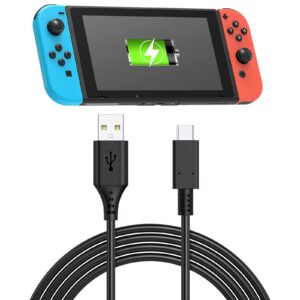Can a car battery be too dead to jump? It’s a common question that pops up when you’re faced with a car that won’t start. The short answer is yes, a car battery can indeed be too dead to jump. But fear not, there are solutions to revive even the most lifeless battery. In this article, we’ll explore the reasons behind a battery’s complete drainage and discuss the steps you can take to bring it back to life. So, if you’ve ever found yourself stranded with a seemingly unresponsive battery, keep reading to find out what to do next.
Can a Car Battery be Too Dead to Jump?
Car batteries are an essential component of any vehicle, providing the necessary electrical power to start the engine and operate various electrical systems. However, batteries can sometimes fail, leaving you stranded with a dead car. One common solution to this problem is jump-starting the vehicle using another car’s battery. But can a car battery be too dead to jump? In this article, we will explore this question and shed light on several related subtopics.
Understanding Car Batteries
Before delving into whether a car battery can be too dead to jump, it is important to understand the basic functioning of a car battery. A typical car battery is a lead-acid battery that consists of six cells, each generating around 2 volts, resulting in a 12-volt battery.
Car batteries store chemical energy that is converted into electrical energy when needed. This process occurs through a chemical reaction between lead plates and a sulfuric acid electrolyte. When the engine starts, the battery delivers a surge of electrical power to the starter motor, igniting the engine’s combustion cycle.
Over time, car batteries can deteriorate due to various factors such as temperature extremes, lack of maintenance, or simply reaching the end of their lifespan. When this happens, the battery’s ability to store and deliver electrical energy decreases, eventually leading to a dead battery.
The Jump-Starting Process
Jump-starting a car is a commonly used method to revive a dead battery. The process involves connecting another vehicle’s battery to the dead battery using jumper cables. The functioning vehicle provides the necessary electrical power to start the engine of the dead car.
When jump-starting a car, it is essential to follow a specific procedure to ensure safety and maximum effectiveness. Here’s a step-by-step guide:
- Park the functioning vehicle close to the dead vehicle, but do not let them touch.
- Turn off both vehicles’ engines, as well as any electrical accessories like lights or radios.
- Open the hoods of both vehicles and locate their batteries.
- Identify the positive and negative terminals on each battery.
- Attach one end of the red (positive) jumper cable to the positive terminal of the dead battery.
- Connect the other end of the red (positive) jumper cable to the positive terminal of the functioning battery.
- Attach one end of the black (negative) jumper cable to the negative terminal of the functioning battery.
- Connect the other end of the black (negative) jumper cable to a solid, unpainted metal surface on the engine block of the dead vehicle. This serves as a grounding point.
- Start the functioning vehicle and let it run for a few minutes to charge the dead battery.
- Try starting the dead vehicle. If it doesn’t start, wait a few more minutes before attempting again.
- Once the dead vehicle starts, remove the jumper cables in the reverse order they were connected.
- Let both vehicles run for at least 10 minutes to allow the alternator to recharge the battery.
This standard jump-starting procedure works in most cases, but what if the battery is extremely dead?
How Dead Can a Car Battery Be?
Car batteries can have varying degrees of “deadness.” In general, a dead battery simply means that it does not have enough charge to start the engine. However, there are different levels of battery depletion:
- Low Voltage: The battery has a low charge, but there is still some electrical power left. In this case, jump-starting the vehicle is likely to be successful.
- Completely Discharged Battery: The battery has lost all charge and shows no signs of electrical power. While jump-starting might work, it is less likely to succeed in reviving the battery.
- Deeply Discharged Battery: The battery has been discharged for an extended period, causing its voltage to drop significantly. Jump-starting alone may not provide sufficient power to start the engine in this scenario.
Factors Affecting Jump-Starting
Several factors can affect the success of jump-starting a dead battery:
- Battery Age: Older batteries are generally more susceptible to complete discharge and may not hold a charge as efficiently as newer ones.
- Battery Condition: If the battery has been abused or damaged, such as through overcharging, it may not respond well to jump-starting.
- Temperature: Extreme temperatures, both hot and cold, can impact the chemical reactions within the battery, affecting its overall performance.
- Alternator Function: If the vehicle’s alternator is faulty or not providing sufficient power, the battery may not recharge properly even after jump-starting.
Considering these factors, it is possible to encounter a scenario where a car battery is too dead to jump successfully. In such cases, additional steps or alternative methods may be required to revive the battery.
Alternative Methods to Revive a Dead Battery
If jump-starting does not work due to a severely discharged battery, there are alternative methods you can try:
Battery Charger
A battery charger is an external device designed to recharge dead or severely discharged batteries. It connects directly to the battery and supplies a controlled current to revive the battery gradually. Using a battery charger can take several hours or even overnight to achieve a full charge, depending on the battery’s condition.
To use a battery charger:
- Ensure the charger is unplugged and turned off.
- Connect the positive (red) charger clamp to the positive terminal of the battery.
- Connect the negative (black) charger clamp to either the negative terminal of the battery or a grounded metal surface.
- Set the charger to the appropriate charging mode and voltage level.
- Plug in the charger and turn it on.
- Monitor the charging process and follow the manufacturer’s instructions.
- Once the battery is fully charged, disconnect the charger in the reverse order of connection.
Battery Desulfator
A battery desulfator is a device designed to remove sulfation, which is a common cause of battery failure. Sulfation occurs when sulfuric acid within the battery forms lead sulfate crystals on the plates, reducing the battery’s ability to hold a charge.
By using a desulfator, you can potentially revive a dead battery and extend its lifespan. Desulfators work by applying high-frequency pulses or electrical waves to break down the lead sulfate crystals and restore the battery’s capacity.
Using a desulfator typically involves connecting it directly to the battery terminals and letting it run for a certain period. The desulfator will then attempt to remove the lead sulfate crystals and improve the battery’s performance.
Professional Assistance
If all else fails, seeking professional help from a mechanic or automotive service center is a viable option. They have the tools and expertise to diagnose battery issues accurately and recommend the most suitable solution. In some cases, battery replacement might be necessary if the existing battery is beyond repair.
Maintaining a Healthy Car Battery
Prevention is always better than cure when it comes to car batteries. To avoid finding yourself with a dead battery and wondering if it is too dead to jump, it is important to maintain a healthy battery. Here are some tips to keep your car battery in good condition:
- Regular Maintenance: Follow the manufacturer’s recommended maintenance schedule, including battery check-ups, cleaning terminals, and ensuring proper connections.
- Avoid Draining: Minimize prolonged use of electrical accessories, such as headlights or radios, when the engine is not running.
- Check Charging System: Periodically have your vehicle’s charging system, including the alternator, checked to ensure proper functioning.
- Extreme Temperatures: If you live in an area with extreme temperatures, consider using a battery insulation kit or parking in a garage to mitigate the effects of temperature extremes.
While jump-starting a car battery is a common and effective method to revive a dead battery, there are limits to its effectiveness. A car battery can be too dead to jump in certain situations, such as when it is completely discharged or deeply discharged for an extended period. In such cases, alternative methods like using a battery charger or desulfator, or seeking professional assistance, may be necessary. By understanding how car batteries work and taking preventive measures, you can minimize the chances of encountering a dead battery and ensure a reliable and hassle-free driving experience.
Frequently Asked Questions
Can a car battery be too dead to jump?
Yes, it is possible for a car battery to be too dead to be jump-started.
What does it mean when a car battery is too dead to jump?
When a car battery is too dead to jump, it means that it has completely lost its ability to hold a charge. This can happen if the battery is old, damaged, or has been discharged for an extended period of time.
Why won’t a dead car battery take a jump-start?
A dead car battery may not take a jump-start if it has reached a point of irreversible damage. In such cases, the battery is unable to hold a sufficient charge to start the engine, even with the assistance of a jump-start.
What are the signs that a car battery is too dead to jump?
Signs that a car battery is too dead to jump include no response from the engine when attempting to start the car, dim or flickering lights, and a clicking sound when turning the key in the ignition.
Can a completely dead car battery be revived?
In some cases, a completely dead car battery can be revived using specialized battery chargers or by seeking professional assistance. However, there are instances when the damage is irreversible, and the battery needs to be replaced.
How can I prevent my car battery from becoming too dead to jump?
To prevent your car battery from becoming too dead to jump, it is important to perform regular maintenance, such as keeping the terminals clean, avoiding excessive discharges, and checking the battery’s health. Additionally, using your vehicle regularly can help keep the battery charged.
Final Thoughts
A car battery can indeed be too dead to jump. When a battery is completely drained or has a low charge, it may not have enough power to start the engine even with a jump start. This can be due to various reasons, such as a faulty battery, a discharged battery over an extended period, or problems with the vehicle’s charging system. In such cases, it is best to seek professional help or consider replacing the battery to ensure reliable starting power. Ultimately, the question of “can a car battery be too dead to jump” highlights the importance of regular maintenance and proper care of your vehicle’s battery.


